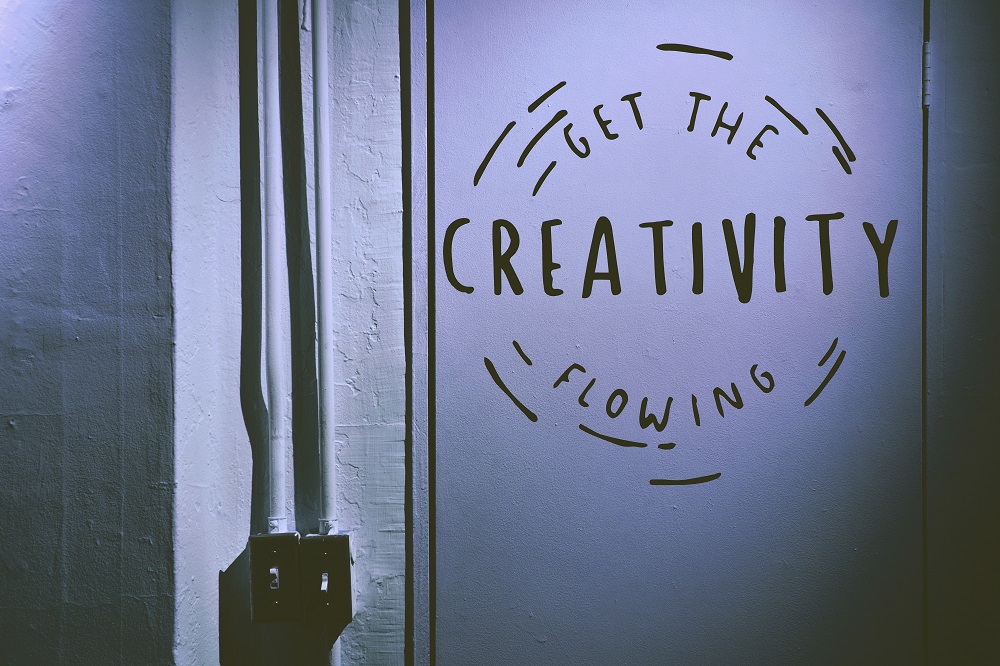In my last blog, I looked at The Four Stages of Creativity (Preparation, Incubation, Illumination, Verification), by the British Psychologist Graham Wallas. These stages are summarised below.
Preparation: Gathering the necessary data and stimuli: Think of Bill Gates on a ‘Think Week’, reading for 18 hours a day.
Incubation: The marinating stage: Think of Charles Darwin walking his Fox Terrier along his ‘Thinking Path’ in Kent, years after his HMS Beagle expedition.
Illumination: The insightful ‘Eureka’ moment. Think of Albert Einstein glancing at the famous tower clock in Bern, Switzerland and linking space and time to conceptualise Space-Time.
Verification: The ‘putting into action’ and evaluating stage: Think of the medical applications and treatments that derived from Marie Curie’s work on radioactivity.
In this blog, I continue to explore how creativity is best understood as a collective effort. One that always involves other people. I describe how this understanding can help groups to think differently and become more deliberately creative. Describing what they need to do to get the creativity juices flowing.
The social nature of creativity

The idea of creativity being less about an individual and more about a collective effort makes sense. Whilst history may like to tell a story of the genius individual, it places less emphasis on the supporting actors in the story. Any story will involve supporting actors. Notice how Bill Gates’ ‘Think Weeks’ involved reading reports from other Microsoft colleagues. Don’t forget the important contribution of Pierre Curie, Marie Curie’s husband and exceptional Physicist in his own right, who shared the Nobel Prize for Physics with his wife in 1903. Not to mention the other scientists of their time with whom they collaborated.
Clearly, there is more to creativity than simply one genius working in isolation.
In these cases, creativity was derived from its social context. It cannot possibly occur in a vacuum.
One of the appealing takeaways from The Four Stages of Creativity Model is that it advocates that creativity exists in all of us. It is something that can be cultivated. Also, that optimal conditions for creativity can be created. Knowing about the Stages of Creativity can help with this, both at an individual level and at a group and team level. In fact, under the right conditions, a well-functioning team can become more creative than the members could potentially achieve independently.
Deliberately creative groups
Take a look at the TED Talk by Amy Climer, a speaker, trainer and coach who specialises in enabling teams to be more creative and innovative.
Amy Climer puts it so aptly. ‘We all create. We all innovate. We all collaborate.’
‘Creativity is in our DNA’.
Amy Climer shares her twenty-plus years of experience in this talk, including her PhD research and personal examples. Amy Climer’s work is based on her firm belief that creativity is deliberate and that it can be intentionally developed within groups.
Amy Climer’s video draws out and illuminates some of the key learning points that all well-functioning, creative teams have in common: Team Purpose, Team Dynamics and Team Process. These are explained below:
- Team Purpose: This is where the focus comes from. Teams need to be able to answer: What are we doing together? Why do we meet on a regular basis? Why does our purpose matter? Purpose cannot be too narrow. It needs to be broad enough to have some flexibility and autonomy in there (giving room for the creative piece). When this happens, a positive loop cycle happens. Team purpose drives innovation. As innovation increases, so does team purpose, further driving innovation.
- Team Dynamics: Best understood in terms of the interplay between psychological safety vs creative abrasion. Psychological safety is when a team member can put an idea on the table and know they will not be attacked. Where they can bring their whole self to the team. Creative abrasion is where people are free to disagree around ideas and concepts without personalities or identities getting in the way.
- Team Process: Teams need to explicitly address how they propose to work creatively together. People need to understand what their methodology is together. This is especially important due to the different thinking needed for generating and evaluating ideas simultaneously. They are two different types of thinking. They need to be separated out.
Underpinning all this is a desire to be creative – a willingness to put the effort in. Amy Climer’s work shows us that everyone has creativity in them. Even the ‘Phils’ of the world. She describes Phil (not his real name), who puts the damper on a team’s creativity brainstorming session. He blocks the potential idea with an evaluative stance of ‘That won’t work; we tried it before. It failed!’ Phil’s story speaks to the power of context. There are two sides to Phil. The context can transform Phil into a jaded work colleague Phil or a guitar-playing, community theatre Phil. The difference Amy saw was situational – the context mattered.
She suggests that there is a need to pay more attention to creating the conditions that enable people and teams to thrive creatively. After all, there are bound to be more Bill Gates, Charles Darwins, Albert Einsteins, Marie Curies or Amy Climers.
Four stages and three factors
Amy Climer’s work builds, extends and complements The Four Stages of Creativity, showing how creativity can be intentionally cultivated in teams.
Yet, teams are complicated. The dynamics can be complex and challenging. Complicated by egos, personalities, and various agendas. These elements can really get in the way of team communication and trust.
Amy Climer’s three factors offer possible ways of cutting through these complexities, actively encouraging group creativity. Helping teams to ‘go meta’, work together and channel The Four Stages of Creativity within their group contexts.
Remembering the importance of context, purpose, team dynamics and process can help teams navigate the journey from preparation, incubation, and illumination to verification.
The power of working ‘with’
Coaches can call upon Amy Climer’s three factors of creativity and effectively work with groups. Addressing these 3 questions with any team can be highly beneficial.
- Purpose: What are we all trying to achieve?
- Team Dynamics: What are our ground rules in relation to each other?
- Process: How are we going to achieve what we want?
By addressing these questions, coaches can firmly ground their coaching practice into a collaborative ‘with’ style. They are not there ‘doing to’ the group. They are there to do ‘for’ the group; they are there ‘with’ the team by holding a safe space and a strong group agreed process. That’s when the collective creativity can start to emerge.
Addressing Amy Climer’s three factors has a strong flavour of true collaboration. It grounds and releases the group. Allowing them to access and move more into the realm of bringing new possibilities to life. That is where collective creativity lives.
About us:
We create the space for leaders to step back, think clearly, and navigate complexity with confidence. By sharpening the narrative that drives decisions, teams, and performance, we help leaders move forward with clarity and impact. Our approach blends deep listening, incisive challenge, and commercial focus—strengthening leadership at every level, from business transformation to boardroom decisions.
“We share resources that help coaches deepen their practice and expand their impact. The articles on this site are designed to spark fresh thinking, offer practical tools, and support the continuous growth of coaches at every stage. “
Jude Elliman
Founder
Our Core Approach:
We work with leaders to sharpen their thinking, strengthen their leadership, and navigate complexity with confidence. Our approach is built around three core areas:
Narrative Coaching – Working with the stories that shape leadership, teams, and organisations.
Commercial Focus – Cutting through complexity to drive clear, strategic decisions.
Challenge & Space – Asking the right questions while creating the space to reflect and grow.
Through this, we help leaders drive transformation, align teams, and make high-stakes decisions with clarity and impact.


